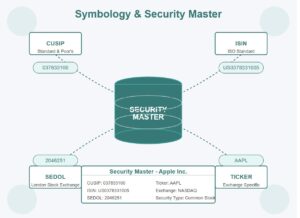Home Education center The Future of Direct Indexing Technology
The Future of Direct Indexing Technology
Table of Contents:
With advanced technology and automation, direct indexing has a promising future for financial advisors and retail investors. This strategy enables highly personalized investment solutions that align with individual needs, goals, and mandates. As technology evolves, direct indexing offers simplified workflows, real-time implementation, and automated lifecycle management. Personalized investing may soon be as easy as buying an ETF.
Personalization at the Core
Direct indexing thrives on personalization. Unlike traditional investment vehicles, it allows investors to build portfolios that mirror an index while incorporating personal preferences. For example, an investor can exclude certain industries for ethical reasons or overweight sectors that match their financial goals. This customization ensures investments align with individual values and aspirations.
Case Study: Aligning Investments with Eco-Friendly Goals
Consider an investor focused on sustainability. Direct indexing lets them exclude oil and gas companies while increasing exposure to renewable energy stocks. This approach supports financial growth while aligning with their environmental values. It demonstrates the tangible impact of personalized investing.
Simplifying Complexity for Advisors and Investors
Managing a customized portfolio can be overwhelming. However, direct indexing platforms simplify the process with advanced technology. These platforms integrate data analytics, user-friendly interfaces, and intelligent algorithms to make portfolio management more accessible.
Example: Automated Rebalancing
Direct indexing automates rebalancing to maintain target allocations. Investors receive notifications only when significant action is needed. This eliminates manual calculations and allows advisors to focus on strategy instead of daily management.
Real-Time Implementation: A Game Changer
One major advancement in direct indexing is real-time execution. Traditional investment processes often involve delays and inefficiencies. With seamless technology, direct indexing eliminates these bottlenecks, allowing for instant adjustments.
Impact of Real-Time Adjustments
Imagine a financial advisor adjusting a client’s portfolio instantly in response to market shifts or personal updates. This agility ensures the strategy stays aligned with financial goals while maximizing performance and minimizing risk.
Disintermediation Through Technology
As technology advances, direct indexing may reduce reliance on third-party management. Automation empowers investors to handle assets independently, lowering the need for intermediaries.
The Rise of DIY Investing
Educational tools and intuitive platforms give investors more control over their portfolios. While advisors remain essential for strategic planning, technology enables greater autonomy in daily portfolio management.
Automated Lifecycle Management
Direct indexing platforms also manage complex tasks like benchmark reconstitution and tax-loss harvesting. These automated features optimize portfolios continuously.
Continuous Tax-Loss Harvesting
Platforms can automatically identify and execute tax-loss harvesting opportunities. By selling securities at a loss to offset capital gains, investors reduce tax burdens efficiently without missing opportunities.
Beyond Individual Accounts: Household-Level Indexing
A significant development in direct indexing is household-level optimization. This approach considers all tax-advantaged and taxable accounts to create a unified financial strategy.
Holistic Wealth Management
Household-level indexing maximizes tax efficiency and investment growth across multiple accounts. It also accounts for factors like joint asset ownership and varying risk tolerance levels within a family.
Conclusion
Direct indexing technology continues to evolve, offering more sophistication, accessibility, and personalization. With real-time execution, automation, and advanced analytics, it simplifies what was once complex. Both financial advisors and investors benefit from this transformation, paving the way for customized wealth-building strategies tailored to individual goals.
Related Pages
- Personalization in Portfolio Management
- Harvesting Gains to Manage Cost Basis
- What is Direct Indexing: A Comprehensive Introduction
- Optimized vs Traditional Portfolio Rebalancing
- Direct Indexing Basics: The Key to Personalized, Tax-Efficient Investing
- Direct Indexing-The Smart Strategy Advisors Can’t Afford to Ignore
Offer personalized experiences for every client at scale




